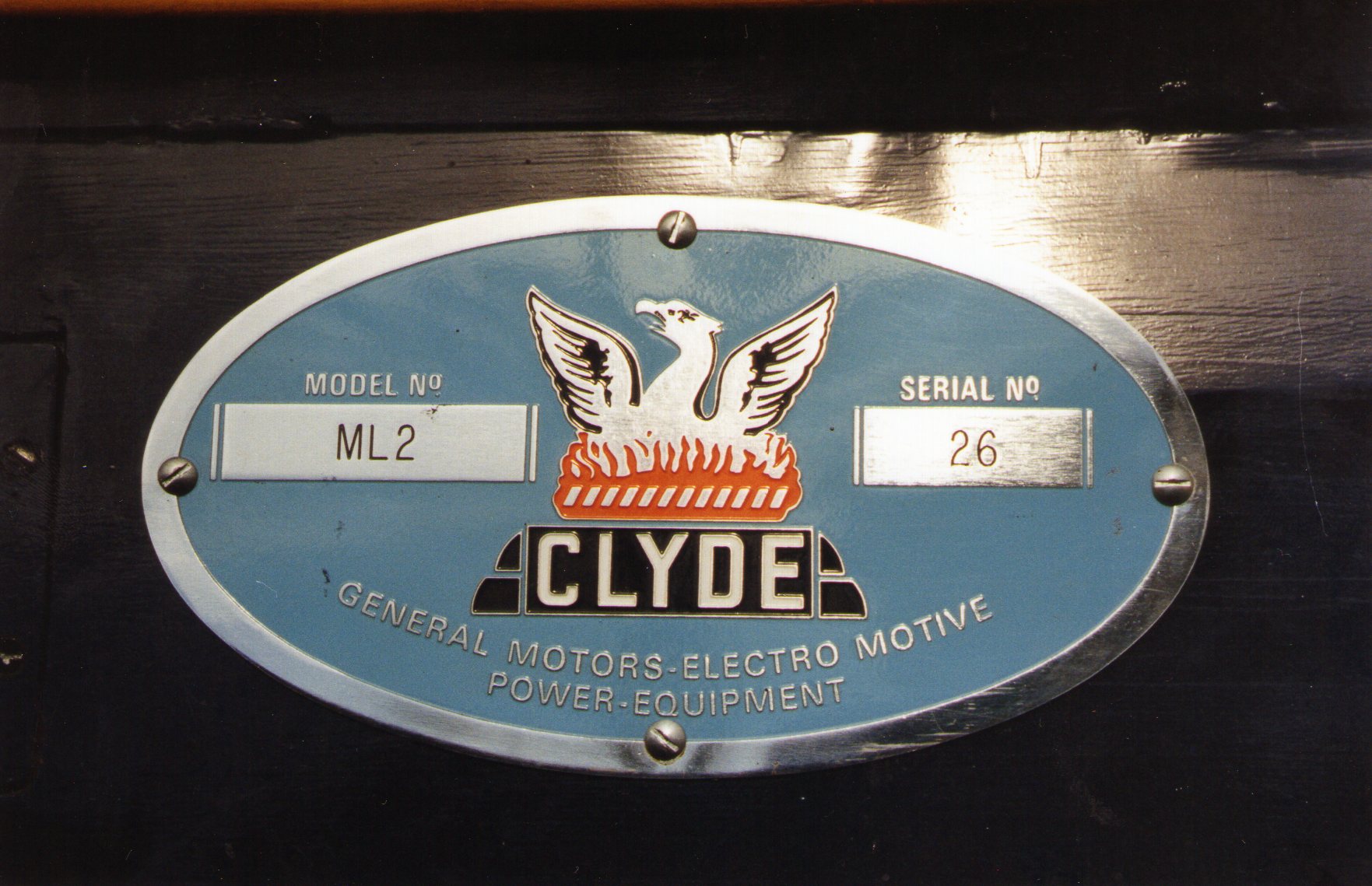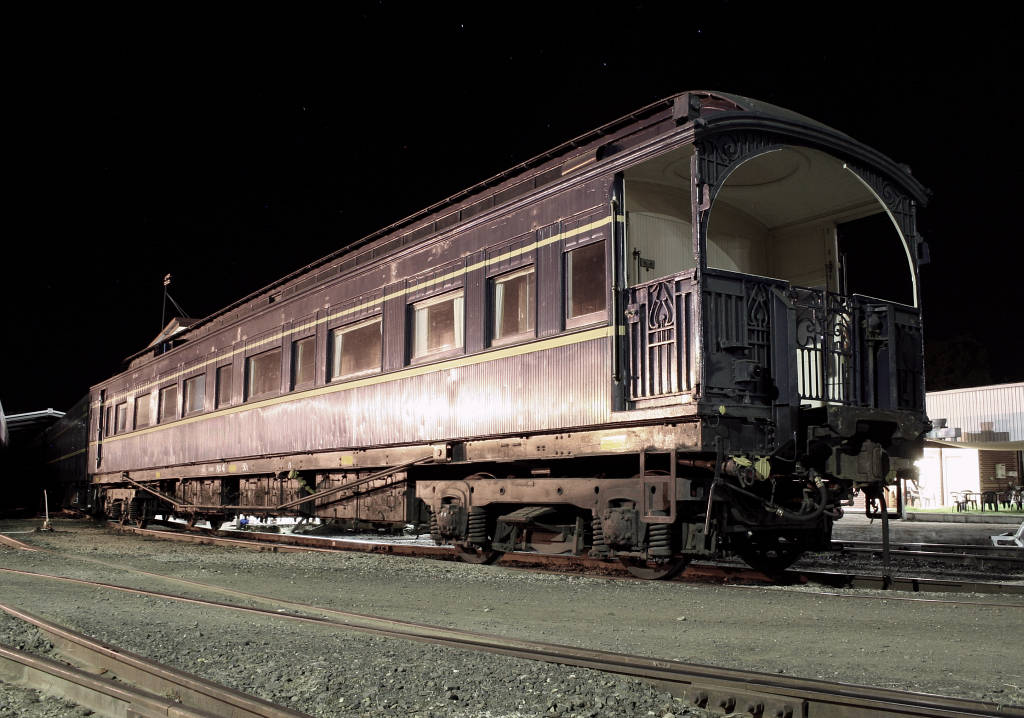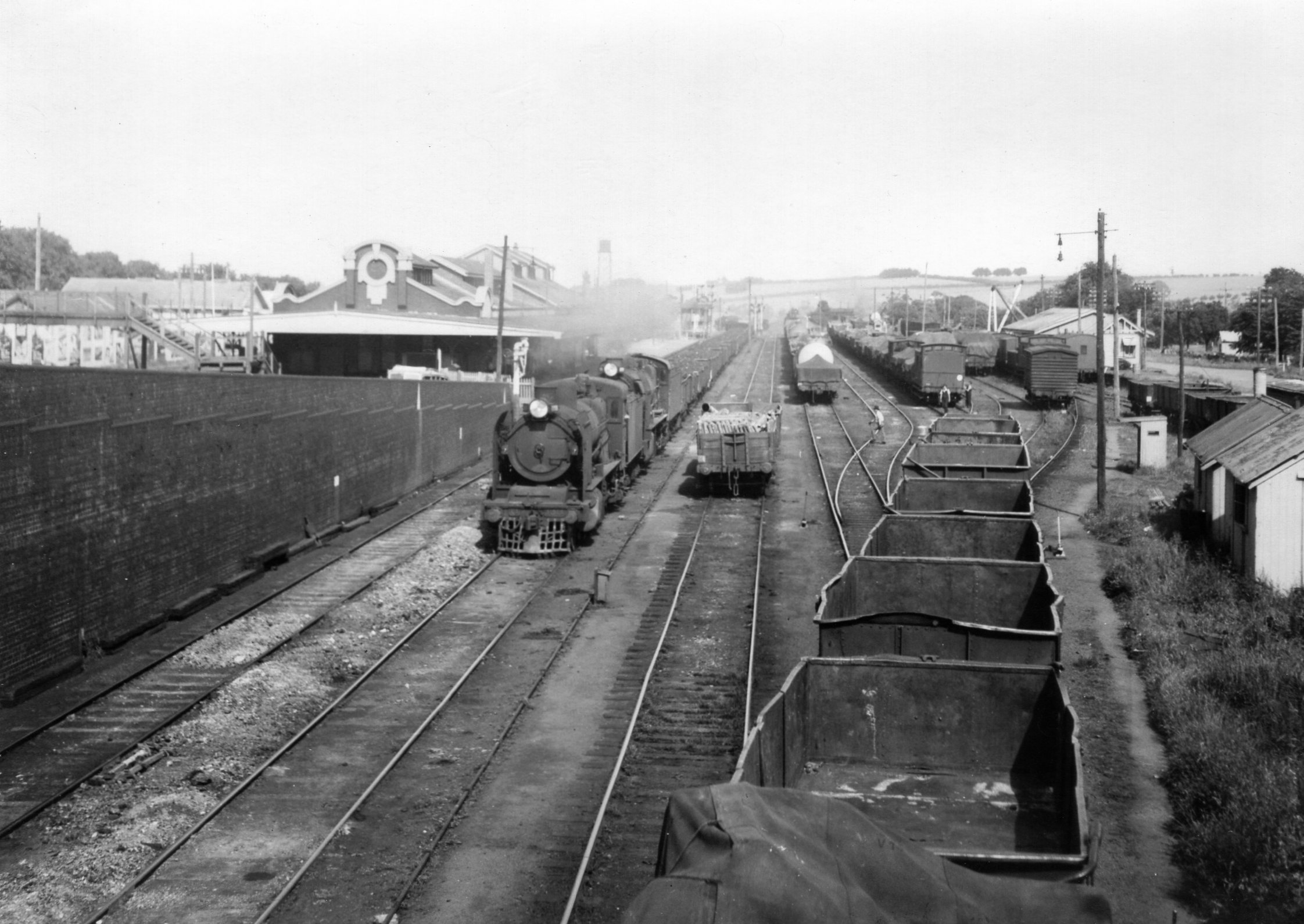|
Victorian Railways B Class (diesel)
The B class are a class of diesel locomotives built by Clyde Engineering, Granville for the Victorian Railways in 1952–1953. Ordered and operated by the Victorian Railways, they initiated the dieselisation of the system and saw use on both passenger and freight services, with many remaining in service today, both in preserved and revenue service. Some were rebuilt as the V/Line A class, while others have been scrapped. History The B class were the first mainline diesel locomotives built for the Victorian Railways. The design was based on the successful Electro-Motive Diesel F-unit locomotives with the distinctive bulldog nose. They were unusual in having a streamlined drivers cab at each end. Inception After World War II, the Victorian Railways was run down from years of Depression-era under-investment and wartime over-utilisation. Chief Mechanical Engineer Ahlston traveled the world studying railway rehabilitation. Britain leaned towards steam locomotives, while France ... [...More Info...] [...Related Items...] OR: [Wikipedia] [Google] [Baidu] |
Spirit Of Progress
The ''Spirit of Progress'' was the premier express passenger train on the Victorian Railways in Australia, running from Melbourne to the New South Wales border at Albury, and later through to Sydney. Route From its introduction in November 1937 until April 1962, the train service ran on broad gauge line from Melbourne's Spencer Street station to Albury, on the New South Wales / Victorian border, where passengers changed to a New South Wales Government Railways train (the ''Melbourne Limited Express''), running on standard gauge track to complete the journey to Sydney. Following the completion of the standard gauge line between Melbourne and Albury in April 1962, the ''Spirit of Progress'' was extended to Sydney. Broad gauge service (1937–1962) The ''Spirit of Progress'' ushered in a standard of passenger train speed and comfort not previously seen in Australia. Its introduction in November 1937 marked the culmination of many years of preparatory work by the Victori ... [...More Info...] [...Related Items...] OR: [Wikipedia] [Google] [Baidu] |
Bulldog Nose
"Bulldog nose" is the nickname given, due to their appearance, to several diesel locomotives manufactured by GM-EMD and its licensees from 1939 to 1970. The term originated with EMD F-units, as well as later E-unit models such as the E7, E8, and E9. The bulldog nose design has been described as " iconic". It was a blunter and more vertical variation of the similar "slant nose" style, which featured a more sloped front and often less protruding headlight. Examples of this included the EMC E1. Clyde Engineering derivatives In 1951, the EMD F7 series was modified by General Motors' Australian licence holder Clyde Engineering to fit Australian loading gauge and axle load constraints. The A1A-A1A Clyde/EMD ML1 locomotive was introduced on the Commonwealth Railways as the GM class, as well as exported to Pakistan. It was further developed into the ML2 as a dual cab Co-Co locomotive, with a bulldog nose at each end, for Victorian Railways (VR), becoming that system's B class.Obe ... [...More Info...] [...Related Items...] OR: [Wikipedia] [Google] [Baidu] |
Victorian Railways S Class (diesel)
The S class are a class of diesel locomotives built by Clyde Engineering, Granville for the Victorian Railways between 1957 and 1961. History The S class was based on the Electro-Motive Diesel F7 design and were very similar to the GM12 class then being built by Clyde Engineering for the Commonwealth Railways. They were mechanically similar to the 1952 built double ended B class. The first order for 10 locomotives were progressively delivered between August 1957 and February 1958. The first four took the names and numbers of the recently scrapped S class steam locomotives, with all being named after prominent Victorians. An additional eight locomotives were ordered for use on the new North East standard gauge line and delivered between November 1960 and December 1961. The class were initially used on express passenger trains such as the ''Intercapital Daylight'', ''Southern Aurora'', ''Spirit of Progress'' and ''The Overland'', but were also used on fast freights. On the b ... [...More Info...] [...Related Items...] OR: [Wikipedia] [Google] [Baidu] |
Victorian Railways T Class
The T class are a class of diesel locomotives built by Clyde Engineering, Granville for the Victorian Railways between 1955 and 1968. History In July 1954, the Victorian Railways placed an order with Clyde Engineering for 25 (later extended to 27) diesel electric Electro-Motive Diesel G8 locomotives to partially dieselise country branch lines.1st Order (27 locos): T320-T346 & T413 (1 loco) Mark Bau's VR website In June 1959, the first of an additional ten entered service. Although mechanically similar to the first batch, they differed by having a cab raised above the hood line. Mark Bau's VR website A further ten entered service from Dece ... [...More Info...] [...Related Items...] OR: [Wikipedia] [Google] [Baidu] |
Victorian Railways Royal Train
The Victorian Railways' (VR) Royal Trains operated to transport members of the Royal Family on their numerous tours of Australia on the Victorian rail network. The same carriages were also used for a number of vice-regal trains for the Governor-General of Australia and the Governor of Victoria. The last Royal Train ran in 1988. Operation Royal trains usually operated with special carriage stock set aside for the purpose. Most trains operated with double headed locomotives to reduce the chance of the train being stranded due to locomotive failure, with a third locomotive running in front of the train to ensure the track was clear. A special headboard with the royal coat of arms was usually affixed to the front of the leading locomotive. Carriages In the history of the Victorian Railways there were five special carriages designated for royal train and other special services, designated State Car 1 through to State Car 5. From 1954, the carriages were painted in the standard ... [...More Info...] [...Related Items...] OR: [Wikipedia] [Google] [Baidu] |
Co-Co Locomotives
Co-Co is the wheel arrangement for diesel or electric locomotives with two six-wheeled bogies with all axles powered, with a separate traction motor per axle. The equivalent UIC classification (Europe) for this arrangement is Co′Co′, or C-C for AAR (North America). Use Co-Cos are most suited to freight work as the extra wheels give them good traction. They are also popular because the greater number of axles results in a lower axle load to the track. History The first mainline diesel-electric locomotives were of Bo-Bo arrangement. As they grew in power and weight, from 1937 the EMD E-units used an A1A-A1A layout with six axles to reduce axle load, but only four of them were powered. After WWII, the British LMS ordered two prototype locomotives with some of the first Co-Co arrangements. The first C-C design recorded was a narrow-gauge Hornsby opposed-piston Hornsby-Akroyd-engined locomotive of 1903 for the Chattenden and Upnor Railway. There was a two-speed mec ... [...More Info...] [...Related Items...] OR: [Wikipedia] [Google] [Baidu] |
Orbost Railway Line
The Gippsland line (also known as the Orbost railway line) is a railway line serving the Latrobe Valley and Gippsland regions of Victoria, Australia. It runs east from the state capital Melbourne through the cities of Moe, Morwell, Traralgon, Sale and terminating at Bairnsdale. Prior to its dismantling in 1994, the line extended to Orbost. The dismantled section now comprises the East Gippsland Rail Trail, a shared bicycle, walking, and horseriding track. Services Metro Trains Melbourne operates suburban passenger services along the inner section of the line as the Pakenham line, while V/Line services operate as the Traralgon and the Bairnsdale lines. Freight services also use the line, operated by Qube Holdings. History Rail lines were built to Gippsland in the 1870s and initially played a crucial role in developing agricultural industries in Gippsland as well as tourism. It also played a crucial role in the development of coal mining in the Latrobe Valley in the 1920s ... [...More Info...] [...Related Items...] OR: [Wikipedia] [Google] [Baidu] |
Operation Phoenix (railway)
Operation Phoenix was a post-World War II rehabilitation program carried out by the Victorian Railways (VR) in Australia. The program commenced in 1950 and was originally planned to take 10 years and cost £80 million pounds. (VR publicity brochure) Operation Phoenix was named after the bird from Egyptian mythology. Background The Victorian Railways of the 1930s and 1940s had become run down, with years of economic depression, the war effort, and material shortages resulting in a general decline. At the time it was expected that a railway the size of VR should have been building 25 locomotives, 30 to 40 carriages, and 500 wagons per year, as well as relaying 60 miles of track. In reality VR were only able to build an average of 4 locomotives and 200 wagons per year, and these gains had been counteracted by long overdue scrappings. When World War II hit, the VR had no chance to rebuild, with resources being directed towards the war effort, only patch up work and essential mai ... [...More Info...] [...Related Items...] OR: [Wikipedia] [Google] [Baidu] |





